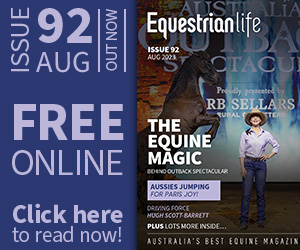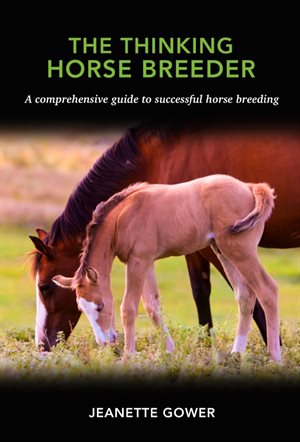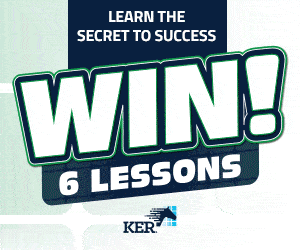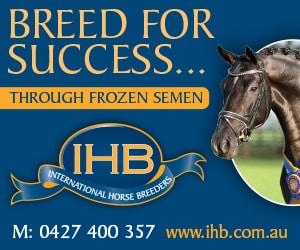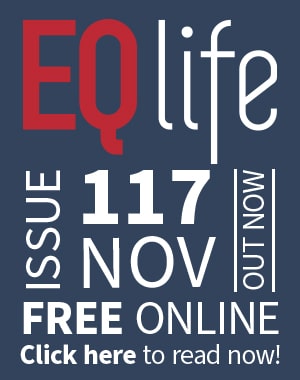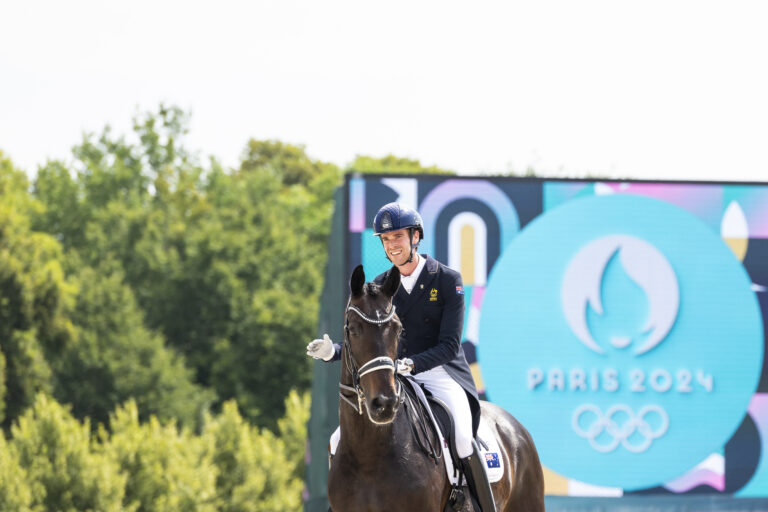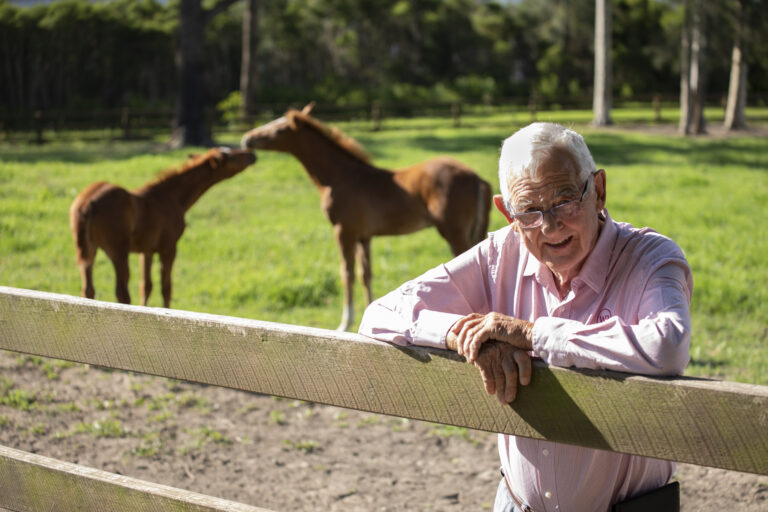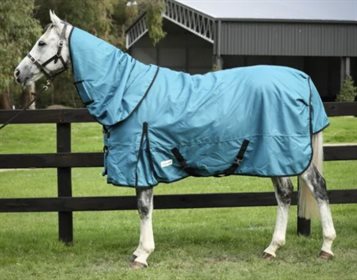‘The Thinking Horse Breeder’.
New Read: The Thinking Horse Breeder
A respected breeder of Australian Stock Horses for over 50 years, South Australian Jeanette Gower has experienced the rollercoaster ride that comes part and parcel with horse breeding.
Her new book, The Thinking Horse Breeder, offers a comprehensive guide to the art and science of horse breeding, covering everything from choosing the right stallion to handling and evaluating foals, breaking in, care, modern breeding techniques, and principles of selection. She discusses the financial considerations of running a stud and also shares her thoughts on the importance of responsible breeding practices.
While Jeanette breeds Australian Stock Horses, she notes that her publication is for all breeders, whether starting out, a hobby breeder, or a larger stud, regardless of breed or country. “Novice breeders will learn how to make their dreams a reality and established breeders will be able to fine tune and benefit from its messages, sometimes provocative, but always with the horses in mind,” she explains.
The Importance of the Mare
One of many key learnings Jeanette has gleaned from five decades in the industry is the importance of the mare. “The most important decision you make on your journey will be choosing your mares. You cannot underestimate the value of a good broodmare. A good mare is your greatest asset and the cornerstone of your stud,” she explains.
An excerpt from her chapter, ‘The Importance of the Mare’, explains the reasons why Jeanette places such an emphasis on selecting broodmares and paying attention to females in the pedigree of a performance horse.
If you have gone back more than three generations, male or female, the influence of that ancestor has been reduced percentage-wise so much that its impact becomes insignificant. The tail female influence is remarkable because it gives insight into those families that continue to influence the present day, quite probably because of mitochondrial DNA. Simply put, in the early days, those females produced superior progeny all the way to the present. Badly bred stock has tail females, but the names of those are long forgotten, while the good ones remain well-known.
Heart size, in relation to speed, is passed on through the female X chromosome. Stallions with a large heart can only pass it on through their daughters. This is self-evident, as a sire can only receive his Y chromosome from his sire. Therefore, sire sons do not have any genetic material from the sire’s X, the maternal chromosome.
Interestingly, the X factor in the Thoroughbred most likely comes from a single British native pony mare, and the breed today that carries more than its fair share of the gene is… the Shetland Pony.
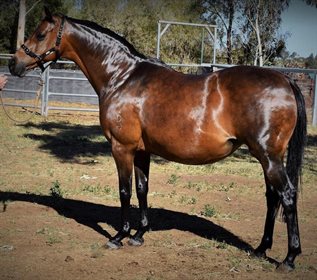
Lanieres, Australian Riding Pony mare, owned by Kylie McKinnon, Kensington Park. Her dam, Tearna Belle (ASB), known as Cartier won the 1997 Crane Trophy. Image: The Thinking Horse Breeder.
With Australia having some of the greatest Thoroughbreds in the world and the ready availability of Thoroughbred mares for equestrian sports breeding programmes, I cannot think of anything better to use for genetic diversity and athletic ability where the breed allows this. Arabian breeders could use racing Arabians. It is proven time and time again that if you keep speed in your breed, you keep most of the other qualities that you need. Speed is the natural by-product of what nature intended for the horse as its survival mechanism. Speed is the link between form and function.
Most breeders will be reluctant to sell mares from their tail female lines. If so, try to buy a close relation of the mare lines (distinct from the stallion lines). The further back you go in the pedigree before coming to a performed horse on the female side, the more I would dismiss it. Non-performance close on the mare’s side is a red flag for me.
If the mare is by a popular stallion, you may struggle to find a suitable stallion to outcross her to, as all the currently popular stallions may be related. However, it is sometimes possible to pick up an outstanding mare from a recognised breeder simply because she is closely related to his best horses, and he cannot use her without close breeding.
Find living relatives of the horses you’ve liked or owned. Ask the breeder what they have. If you find something, do a deep dive into the mare’s story, don’t just buy on pedigree or a picture. Find out basics like height, colour, breeding history, progeny, breeding soundness, and get a vet check to confirm all this unless she is currently in foal. Then, look closely at her conformation and temperament, preferably by seeing her in the flesh or a video.
Most breeds have excellent information on their websites. One must research to find what one’s breed emphasizes. The Australian Stock Horse (ASH) Society, using information from their website, tells you that HSH after a horse’s name, means Heritage Stock Horse. These go back to Waler lines in direct descent without outcrosses to new breeds after the Waler period.
Other breeds list the awards a horse has achieved – Opal Awards, Speed Indexes, or Ratings. These are excellent tools for professional breeders and serious hobby breeders alike. The breeder must research the pedigree and be 100% certain that the female lines he is dealing with are the best he can obtain.
A breed’s popularity with pedigree buffs is due to the ease of tracing a pedigree. Unfortunately, this is not possible for some breeds, so it is up to individuals to do their own research and record it. Breed associations with websites that record results, stories, and history enabling breeders to easily and accurately record and update information, have a decided advantage over others. Part of a breed’s attraction to newcomers and the long-term converted is the enthusiasm and inspiration that stems from building a profile of a particular horse or bloodline one is researching.
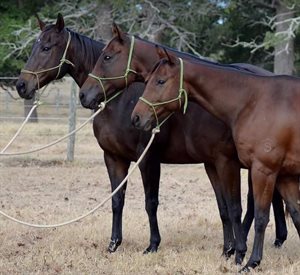
The importance of the mare. Sandhaven ASH stud, Sierra (granddam 22 yr old), Mischief (dam) and Sandhaven Late to the Party. Ownen by Kellee Campbell. Image: Kellee Campbell/The Thinking Horse Breeder.
Researching pedigrees and the history of horses can become an obsession, but that is better than not bothering at all. Buyers like you to give them the pedigree and history of a horse, so it is a disincentive if you can’t give that information. Buyers like to think that what they are buying is part of something bigger, the community of the breed and its history. You are selling them a dream.
Backyard breeders and fly-by-night breeders don’t really care what the dam is as long as it is either the right colour or cheap, thinking that it will give them a foot in the door. As a result, they rarely succeed in breeding anything of merit. They have limited interest in performance, conformation, riding longevity, or even temperament. Rarely will they breed to a stallion worthy of being entire. The resulting foal is worth little in $ value and the breeder quickly realises the cost of breaking it in (and possibly gelding it) is more than he wants to outlay, so tries to sell it on the market unbroken, ungelded, or worse if a filly, putting it in foal!
You are not following sound economics or sound breeding principles if it costs more to break in a horse, or train it, than its eventual value.
The quality of the mare is the difference between you and fellow breeders. Everyone can use the same good quality stallions these days with artificial insemination (AI), but what everyone does with those genetics is different. The quality mare is the differing factor and gives you the competitive edge. I don’t think breeders “forget” the mare; I just think many use sub-standard mares. Good broodmares are harder to secure in their prime, and it takes several years for a mare’s progeny to prove themselves. It is easier to promote the stallion with glamorous photos and show wins. It is easy to talk about his percentages of successful progeny, which makes it easy to overlook the numbers that weren’t successful.
Understandably, stallions are the main marketing method for a breeding program. Yet the mares are the more influential half of the cross!
When you are more experienced, you will find owners offer their good mares to you for lease or private sale before they advertise. This gives you time to explore their suitability and to obtain something which would not otherwise be possible. The top breeders will often do swaps and decide with a handshake agreement. Others will give considerable discounts. They can because they know you will do right by them.
Excerpt from Chapter 13, ‘The Importance of the Mare’, The Thinking Horse Breeder.
Jeanette Gower’s new book, The Thinking Horse Breeder, is a must-read for anyone interested in horse breeding, from those starting up to experienced breeders. From the author of the widely acclaimed Horse Colour Explained (1999), this book is destined to become a classic in its own right.
Visit The Thinking Horse Breeder Facebook page to order a signed copy.
READ THE LATEST NEWS ARTICLES HERE
